Genealogist delves into prominent family’s past – By Tom MacCallum
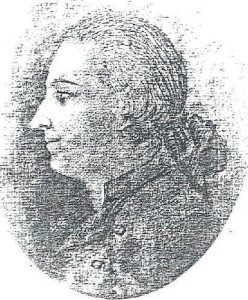
A self-portrait sketch is seen here of Gen. Henry William Harrington, who was said to be a “small, but well-informed and handsome” man.
Aside from the success of Gen. Henry William Harrington’s plantation and his development of cotton as a cash crop in Richmond County and elsewhere in the South, the personal lives of his immediate and extended family involved wars and being beset by many untimely early deaths, fornication, suicide, murder and dueling.
Such was a picture of the family presented Sept. 21 at a meeting of the Richmond County Historical Society at Rockingham City Hall by May MacCallum, genealogist for the society.
She was assisted in her research by Pat Franklin, also a society genealogist, and an ancestor of Claudius Pegues who lived south from Harrington on the Pee Dee River in South Carolina and a contemporary of the general.
The public side of Gen. Harrington is reflected in two historic roadside markers — one at the Richmond County Courthouse and another beside U.S. 1 south of Rockingham in the Wolf Pit community — brigadier general, state senator, commissioner to locate state capital in Raleigh. Both markers were installed in 1928.
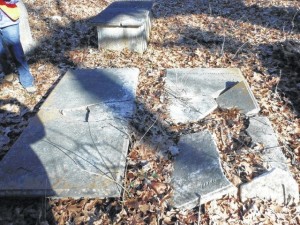
Grave markers are for Gen. Henry William Harrington, left; and his wife Rosanna Auld Harrington in the family cemetery near where their plantation house “Beausejour” was located.
In 1984, Washington Square in downtown Rockingham was renamed “Harrington Square” in his honor during the city’s bicentennial.
His nickname, used by him in correspondence with his wife, was “Harry.”
PERSONAL SIDE
The personal affairs of he and his family are yet another side of their lives.
Harrington left London, England, at age 13, arriving in Jamaica in the Caribbean before settling in the Carolinas. He married Rosanna Auld of Anson County.
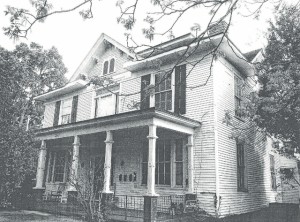
This 1795 house was for the Mount Calm Plantation of Rosa A. Harrington and Robert Troy. It is still occupied in Wadesboro, having escaped burning by Union troops.
They lived in a large plantation house, known as “Beausejour,” which is French for “Pleasant Abode” on the Pee Dee River south of Cordova. The plantation involved thousands of acres, growing mostly cotton for which Harrington was widely celebrated. They were among the largest landowners and among the richest families in Richmond County. They also owned land in Anson County and in other states.
They had nine children, five of whom survived to adulthood. They had four children who died between 1780 and 1794.
Rosanna lamented the deaths of her young children sitting graveside in the family cemetery, which still exists near the Pee Dee River south of Cordova, and writing:
“Ah! Me! this spot, this melancholy place!
How hastily it swallows up a race
Of innocents who here in silence lie
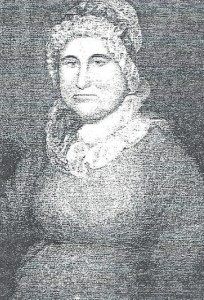
Gen. Harrington’s wife, Rosanna, chased after British troops who raided their plantation during the American Revolution. She tried to get back family personal possessions, including slaves.
Forever sunk from friends-from parent’s eye
Why is it so? Oh wherefore did they die.
How often have their happy parents sat
Fondly attending to pleasing chat,
Rejoiced to see their tender minds improve
Return most welcome for parental love!
Those happy days are gone – forever fled
The pretty prattle mixed with death.”
The first to die was the first Harriet, namesake of the general’s mother. She died from exposure to nature’s elements when her mother fled Tories raiding her plantation.
Another child, born later and also named Harriet, survived only to age 3. She is buried in the family cemetery with the first Harriet. They share the same tombstone.
The Harringtons had two boys: Michael, who died young at 3 years of age; and Henry William Harrington Jr., who died at age 10.

This secretary desk was once used by Gen. Harrington at his “Beausejour” plantation house in the 1700s in Richmond County.
THE THIRD HARRIET
Determined to have a child named for the general’s mother, the Harringtons’ eighth child was named Harriet. The third to receive the name, she lived a long life.
Her young life began with tragedy after being happily married in 1815 to a lawyer, Bella Strong, in Fayetteville for just three months. He left one day for what she thought was a business trip to South Carolina.
He went to South Carolina to engage in a duel with another lawyer without her knowledge. But her older brother, (later “Col.”) Henry William Harrington, did. He was her husband’s second in the duel.
Strong was killed in the duel. While her brother raced back to tell his sister that her husband was dead, others strapped Strong’s body to a sulky and hired a man to take his body home.
Getting close to home, the driver abandoned the sulky. The horse knew the way home. When the sulky with the dead man crossed a bridge, the tender said for once she didn’t even try to collect a toll when she saw the body with legs hanging out of the sulky.
Harriet never remarried.
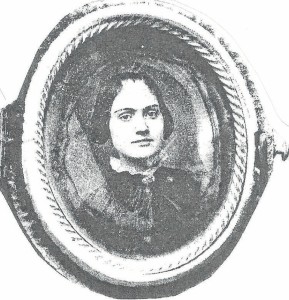
This daguerreotype, the most commonly used photographic process at the time, is of a young Cynthia Cole, mistress and common-law wife of Col. H.W. Harrington.
JAMES AULD
James Auld Harrington was a Harrington son born in 1785 and given a middle name of his mother’s family, Auld.
In 1808 he married Eleanor Wilson, whose father, John Lyde Wilson, was to become governor of South Carolina 1822-24. It is noteworthy — considering the history of Harriet’s husband being killed in a duel — that in 1838, the governor wrote “The Code of Honor” widely used by antebellum duelists. Dueling was banned in North Carolina.
James and his wife lived at their plantation “Stony Hill” in Marlborough County, South Carolina. Their house survived until 1957 when it was destroyed by a tornado. That house reportedly contained an elaborate mirror from his parents’ house at Beausejour.
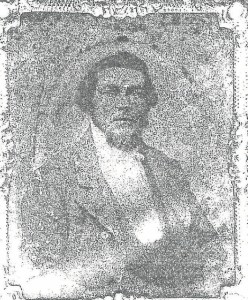
This “fuzzy” daguerreotype, the first publicly announced photographic process, is of Col. Henry William Harrington.
‘COLONEL’ HARRINGTON
The general’s son Henry, often referred to as “Col.” Henry William Harrington, served in the American Navy during the War of 1812. He came home to find his “girlfriend” married to another man.
He never married but fathered a few known children out of wedlock. When Henry was 37, he took in an indentured 16-year-old servant girl as a housekeeper in the family plantation home known as Beausejour. She became his mistress and common-law wife.
She, Cynthia Cole, was to become his lifelong companion even though her mother at first filed a charge of fornication against Henry in court. The case was later dismissed when she failed to show in court.
Cynthia had an inauspicious family past when, after living with Henry for two years, her father got in a fight with another farmer in 1832. Her father was disemboweled by a knife. Holding in his bowels, he told his wife, “I am a dead man. He has killed me,” and died.
Cynthia, a beautiful woman, is not known to have had a child by her union with Henry. However, he fathered a child, Mary Ella, believed to be with Cynthia’s sister, Mary Cole. The child died at age 4.
Henry also fathered a son by Sabra Pate of Laurel Hill named George. The illegitimacy was taken to court and settled. She later married a Wright, and the boy adopted his name. Then at age 8, George became an apprentice to Henry on the plantation.
Known as the “colonel,” Henry in his petition to the United States president for a pardon — after taking the oath of amnesty after the Civil War — claims his military title was purely honorary.
He stated he never financed the Confederacy or fought for it. But he did “lend” the Harrington name to a local military unit attempting to form.
Part of his petition said his property had been destroyed, and he was in debt feeding his family and a large number of Negroes, no doubt his former slaves.
He was eventually the last remaining War of 1812 veteran in Richmond County — a war in which he served the federal government. It is not known if he was granted the pardon.
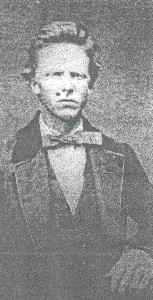
George Wright is believed to be an illegitimate son of Col. Harrington who became an apprentice at age 8 on Harrington’s plantation.
ROSA ANNA
The oldest daughter of General Harrington, Rosa Anna, was named for his wife, Rosanna, and was “Col.” Henry Harrington’s older sister.
Just before her 13th birthday, she married Robert Troy of Wadesborough and lived at Mount Calm Plantation. They had three girls, one of whom bore the family name, Harriet — the fourth family member to receive the name.
It was said that Troy was overcome by heat at a lecture, drank “freely of cold water,” in 1807 and died.
Rosa was left with nothing because Troy’s will could not be found, and there was no male heir. Property in those days went to a male heir. Her father, Gen. Harrington, bought the entire estate at auction for her. She had to teach school to supplement her income.
Despite her tragedies, in the end — no doubt with help from her father’s wealth — Rosa died a wealthy woman with extensive property. She made sure one of her daughters inherited the plantation at Mount Calm.
Rosa’s daughter Harriet married three times. Her first husband was wealthy and died young. Her second husband hanged himself from the rafters in the general’s barn. She married a third time in Fayetteville and remained married for life.
CAROLINE
The ninth and last child of Gen. Harrington was Caroline. She was born in 1799 when Harrington was 52 years old.
She married Otho Chambers. They had a son, Harrington Chambers, who died at age 2. She died at age 30 “after a painful disease of six years.” Within months of her death, her husband died.
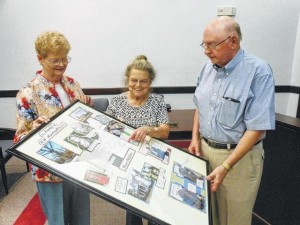
May MacCallum, left, and Pat Franklin, center, of Richmond County Historical Society genealogy, review portions of the presentation on the Harrington family Sept. 21 at Rockingham City Hall with Dr. John Stevenson, society president.
At the time of Gen. Harrington’s death in 1809 at age 62, his obituary in the Raleigh Star said, “In private life he exercised all the virtue that recommend a man to our confidence and regard. The nicest sense of honor and strictest principles of justice marked every transaction of his life.
“In his more domestic relations, he was eminently amiable — the most tender and affectionate husband, the kindest and most indulgent father, a sincere and zealous friend. His memory will ever be cherished by all the virtuous and good of his acquaintance.”
Alas, today there are no known legitimate heirs directly in line to the Harrington family name, once so prominent in Richmond County.
Tom MacCallum is a member of the Richmond County Historical Society.
